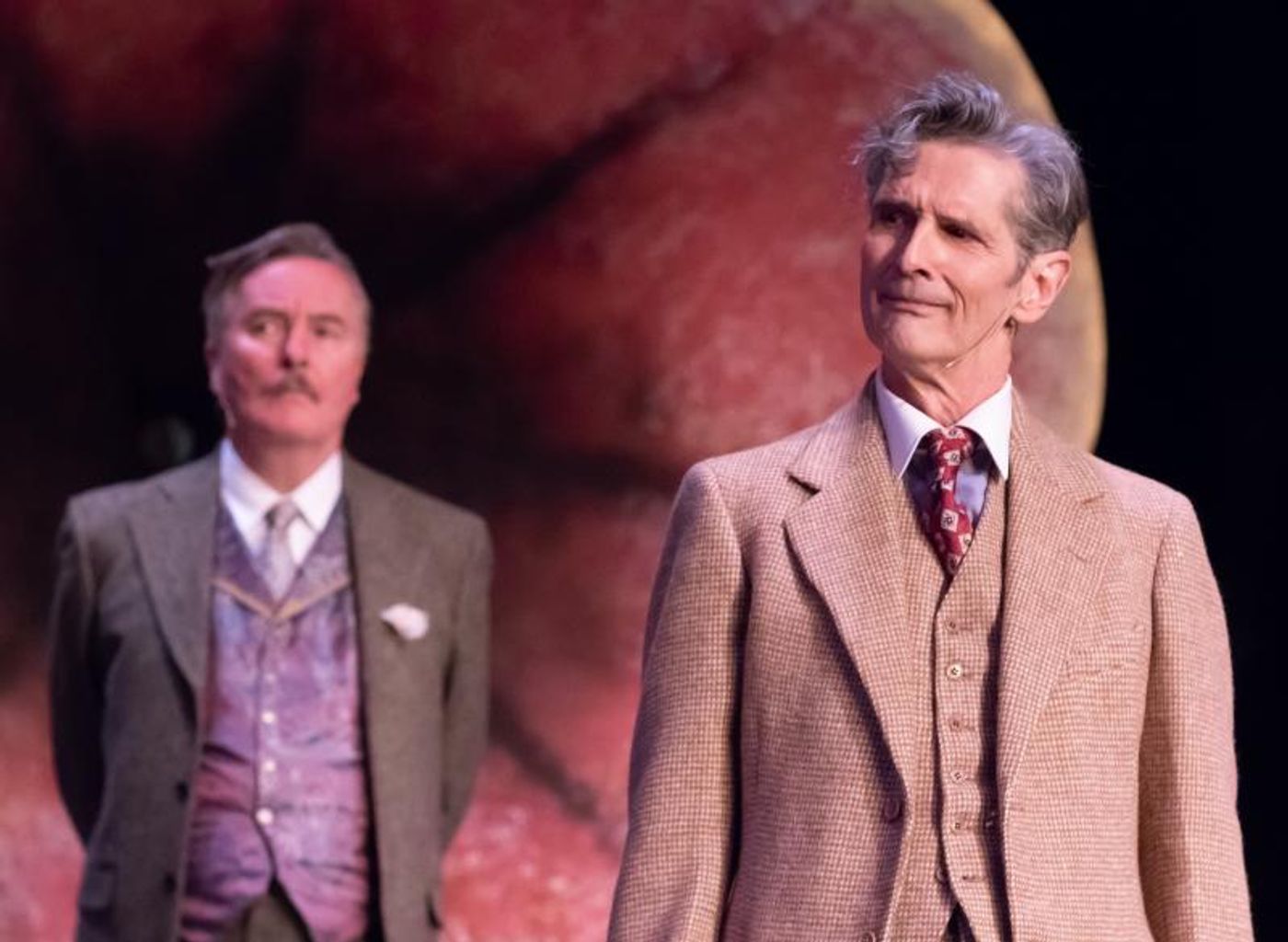Review: MY FAIR LADY at Musical Theater Heritage
Alan Lerner and Frederick Lowe's 1956 musical megahit "My Fair Lady" opened last weekend at Musical Theater Heritage inside its three-venue Crown Center complex with a re-imagination by Kansas City's Heidi Van. This cast is multi-racial and sensitive to the modern relative roles of men and women in today's society.

Any objective observer has to note that times have changed since 1956. "My Fair Lady" and its source George Bernard Shaw's 1916 "Pygmalion" are grounded to the relative positions of man, woman, and class in post-Victorian British society. The charm of the piece lies in the relationships that build, the role reversals, the tongue in cheek insults, and Lerner and Lowe's memorable score.
"My Fair Lady" includes a ton of music written just for this show and that became independent standards like "Wouldn't It Be Loverly," With A Little Bit Of Luck," "The Rain In Spain," "I Could Have Danced All Night," "On The Street Where You Live," "Get Me To The Church On Time," and "I've Grown Accustomed To Her Face."
Van's new vision retains all the charm of the classic music while placing it on a mainly empty stage platform. The empty platform is backed by a huge gramophone horn that does double duty as the sound amplifier for early recording devices and a reminder that the lead character Eliza Doolittle (Allison Jones) begins the show as a Covent Garden flower girl. Everything else the characters need as scenery cleverly appears in the form of flexible set pieces quickly carried on and off stage. Remarkably, the device and the many scene changes work pretty well. A very good six-person orchestra sits barely concealed behind a filmy drop.
For those few readers who may be unfamiliar with this show or the following films, Eliza is a poor flower peddler from the Convent Gardens area of London. In an age before mass communications, the area from which a person hailed was identifiable by their speech patterns. A person from Brooklyn sounded markedly different from someone from New Jersey, or Manhattan. The same was true in the UK.
Linguist and Professor Henry Higgins (Bruce Roach) believes that he can identify a person's origin down to within two or three London blocks from the sound of their voices. Higgins is in Covent Garden copying down the dialect sounds of residents (including Eliza) using a special phonetic alphabet that he alone understands. Higgins meets fellow language scientist Colonel Pickering (Robert Gibby Brand) by chance.
Higgins asserts that the way a person speaks is the root of the class system. He claims that with proper instruction he can pass off the flower girl Eliza as a duchess. Pickering takes him up on his boast and offers a substantial wager.
Eliza refuses at first, but later appears at Higgins' residence in hopes that he can teach her to speak in a more refined way. Higgins, though well born, is also one of the most socially misfit persons on the planet when it comes to interpersonal relationships.
Higgins and Pickering commence to teach Eliza. She moves in with them and they become dependent upon her. Eliza's good-for-nothing Dad dustman Alfred Doolittle (Martin Buchanan), hears that Eliza has moved in with an older man. He draws the wrong conclusion and attempts to extort Professor Higgins. He becomes the unlikely comic relief of the piece.
Eliza learns her lessons well and not only passes for a duchess, but can now stand-in for a princess. She has required the respect of everyone around her and a new beau Freddy (Darrington Clark). The one person she hasn't visibly impressed is Higgins. Once she leaves in frustration, the Professor finally realizes how important she has made herself to him. It turns they need each other as friends and partners.

This is a thoroughly professional production with fine voices throughout. The changes in emphasis demanded by changes in sensibilities over the years have altered the ending relationship between the lead characters.
The George Bernard Shaw estate demanded that the musical version of "Pygmalion" include all of the author's original dialog. Lerner and Lowe grafted the song content into the fabric of their 1956 final product. "My Fair Lady" is a typical length for musicals of its time. It could benefit slightly from a moderate bit of creative pruning.
"My Fair Lady" continues at Musical Theater Heritage through September 30.
Photos courtesy of Musical Theater Heritage and J. Robert Schraeder.
Reader Reviews
Videos

